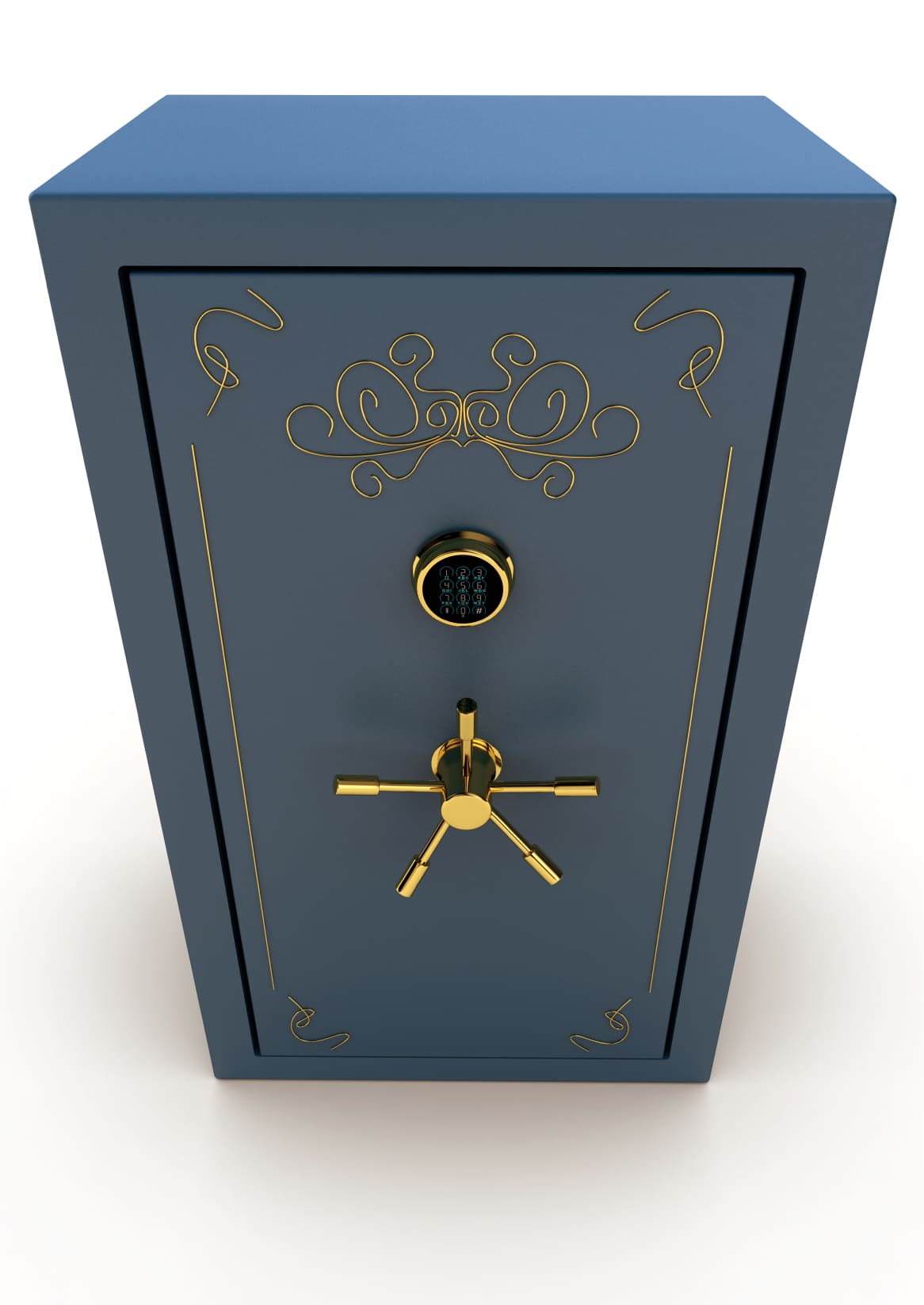Safe Envy: What to Look for When Buying a Gun Safe
K.J. Houtman 06.02.14

I had never seen this strong, confident man jealous of another man’s anything. The day we opened a friend’s safe, though, I saw it. Definitely safe envy. The strong door opened with all the long guns organized just so, and all the handguns were properly in their place. I watched his eyes glisten, his mouth drop open just a tad. No Barretts or Lapuas were inside, either, just run-of-the-mill hunting rifles, shotguns, and pistols. The envy was in the organization and the structure that housed them—a big, beautiful, fireproof gun safe.
Here are five things that might be helpful for you in safe shopping, or maybe just serve as encouragement to purchase one. After all, the difference is all about what is behind that door.
Fire rating
The bare minimum fire rating to look for in a safe that could be reasonably expected to protect the contents from a blaze would be 60 minutes at 1,200 degrees Fahrenheit. Unfortunately, no universal standards exist on how companies test their safes and market them. Ideally, the testing would occur under the same charted temperature arc of a house fire; that it would get to the 1,200 degrees quickly and burn at the full 1,200 degrees for most of the testing period. Some companies might test their safe at 500 degrees for 50 or 55 minutes and only peak the temperature to 1,200 for the last five or 10 minutes. Ask to see the chart of how a manufacturer tested a safe you’re looking at so you have the full story.
Steel or composite
The main cost of a safe is frankly in the price of steel and how much of it is used in the safe. Steel is a commodity. Composite material is cheaper, but without industry standards, there is no promise that the composite will be the same material used yesterday, today, or tomorrow. Not all composites are inherently bad, they just aren’t solid steel. Keep that in mind as you narrow down your search and if you do decide to buy a safe with composite, ask more questions about the materials used.
Size and weight
Underwriter Laboratories (UL) deems anything that weights 750 pounds or less “portable.” If you want a safe that someone can’t just carry off, you need to get above that number at a minimum. How does one determine the size of safe they should buy? Other than measuring the wall space or location that you plan to put it, you might think about the number of guns (particularly long guns) that you have to fit in your safe. But if that is how you calculate for space, you will own a safe that is too small! It is kind of like thinking that the only things you put in your garage are cars. Ha! As soon as you put a safe in your home, you will put important documents, cash, coins, and mementos inside. As well you should, our valuables need a safe place, too. When the other important items in your life take up the safe’s square footage, the guns end up back in the closet or under the bed. Plan for those other important items and not just your long guns when determining the size of the safe you need.
Breaking and entering
It’s far more likely that someone you know will try to break into your safe versus some random stranger-thief. Keeping that in mind, the tools used to crack open your safe could very well be what’s laying around in your own home. Think about what kind of sophisticated tools you have in your home and up your safe’s level of security accordingly. If your house only has a couple of little screwdrivers from a $20 IKEA set, you might not need top-of-the-line theft protection. If your home has a garage full of significant tools, you might want to kick it up to the higher levels of steel thickness and other redundancy protection upgrades: concealed hinges, corner bolts, foiled relocking, and hard stops for drills, to name just a few.
Safe or high-school locker
Maybe you’re thinking getting any safe (even if it isn’t expensive, robust for theft protection or highly rated for fire protection) is better than no safe at all. Doug Tarter, director of sales and marketing at Fort Knox Vaults, disagrees. “A safe that doesn’t provide real protection gives a false sense of security,” said Tarter. “You’ve now just put everything you value in one place that is easily penetrated and not fire-safe.” Tarter has been in the safe-building business for 20 years and the company has been building safes in the United States for even longer. “It’s kind of like an airbag for your car,” continued Tarter. “Once you find out it is inferior, it is too late.”
K.J. Houtman is the author of the award-winning Fish On Kids Books series, chapter books for eight- to 12-year-olds with adventures based around fishing, camping, and hunting. Her work is available at Amazon and local bookstores. Find out more at fishonkidsbooks.com.

